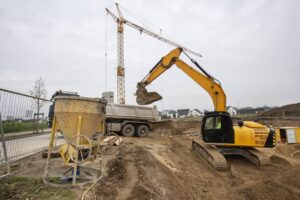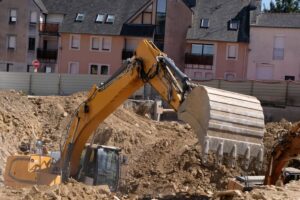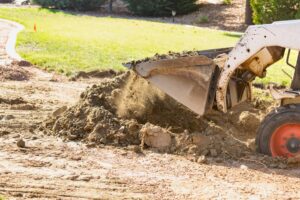How Much Does It Cost To Dig Out Basement: 10 Factors That Affect the Overall Costs
If you wish to increase the size of your house, there are alternatives to adding a story or constructing an addition. Another way to add extra space to your home is excavating a basement or turning a crawl space into a completed basement.
If you're considering adding a basement, you may ask, "How much does it cost to dig out basement areas?"
In this article, we'll discuss the factors that affect the cost of digging a basement and whether you should do a DIY or work with a professional for this home improvement project.
How Much Does It Cost To Dig Out Basement: Factors That Affect The Cost
When estimating the cost of building a basement, you must consider factors that affect the total cost of a basement excavation.
Finished Or Unfinished Basement
Whether you opt for a completed or unfinished basement will impact your final expenses. An unfinished basement may have lighting, be partially or completely waterproof, and often feature a bare concrete floor and stairs.
Still, it will only be suitable for storage. However, having an unfinished basement might be helpful when you need to expand and have more living space if you don't need the space right now and money is tight.
Finishing a basement will be far less costly than moving to a larger home or building an addition.
Finishing a basement involves a lot of labor, including installing HVAC, electrical, plumbing pipes, drywall, and flooring. If the basement area is being separated into different rooms, those inside walls would also be installed.
If they aren't already there, ventilation and egress windows will also be installed to make it a secure, usable, and cozy area.
Labor And Materials

The cost of labor and materials are two more variables that will affect the ultimate cost. Labor costs vary by geography and between urban and rural locations, with the former being more costly.
Material costs don't change much by area, but your choice of materials will affect the bottom line.
The level of finishing you select, whether plumbing is required, and how you want to use the finished living area will all affect the cost if you decide to finish your basement. Basements, for instance, can be utilized as:
- A game room
- A guest room
- A home theater
- A self-contained apartment with a bathroom and kitchen
Physical Lot Conditions
The type of soil, climate, and water table in your lot will also impact the final price of a basement excavation. Some soil excavation techniques will be more expensive.
A higher water table might require a sump pump and more thorough waterproofing. Digging deeper to avoid the deep frost lines and insulate more thoroughly may be necessary in colder climates.
Concrete Slab Foundation Or Basement
The cost of a typical concrete slab foundation will be higher in colder climates since a deep foundation is required to go below the frost line.
This means that compared to places where a shallow foundation is feasible, the price difference between concrete slab foundations and a complete basement foundation will be lower.
Type of Soil on the Property
The type of soil and ground conditions at your property can significantly impact the cost. There are different types of soil compositions in the US, and some can make excavation more challenging.
An example of this would be rocky or clay-heavy terrain, which will require more equipment and labor to finish.
In addition to this, if your property has a high water table, some measures will need to be taken to prevent future flooding, which will add to the overall cost.
Size of the Basement
Another factor in the overall basement excavation expenses would be the size and depth of the basement you're planning.
Naturally, the bigger the basement, the more excavation work and materials it will need, meaning higher costs.
Local Building Code Compliance
Unexpectedly, the project's costs may also increase due to local building standards and regulations. There are costs associated with obtaining the required permits, and your project might require sporadic inspections at certain points.
Relocating Existing Utilities

Moving and relocating existing utilities like water, gas, or electricity lines also impacts the overall cost.
To guarantee safety and regulatory compliance, this kind of work necessitates the expertise of professionals, which might be expensive.
Waterproofing Costs
Ensuring your basement is waterproof and has proper drainage is essential to function properly.
Of course, waterproof membranes and drainage systems will add to the material and labor costs to prevent future water damage.
Disposal of Debris
Disposing of the excavated materials also adds to the cost counter by the end of the project. Transporting the debris and soil will lead to more costs, depending on the weight or volume of the materials.
Is Adding a Basement Worth It?

Adding a new basement to an existing house is costly and disruptive. The process, which might take months to finish, could render the house uninhabitable.
The remodeling cost must be carefully balanced with the benefits of more living space and a higher home value. When determining if this project is right for you, remember the following points.
According to Zillow, the return on investment (ROI) of a fully finished basement is approximately 70%. You will only get its full value if you finish the new basement.
Discuss whether the completed basement will be included in the official square footage of your house and the ramifications with your local tax assessor and planning department.
Think about the landscaping around your house. If there are trees or shrubs close to your house, you might need to make significant changes to the landscape to finish the project.
Should You DIY vs. Professional Basement Excavation?

Excavation is considered the most hazardous construction activity by several environmental safety professionals. There is a significant risk to your safety and your house's structural integrity, even if you could rent the big machinery you need.
To dig out a basement, you must hire experts with specialized training and experience in elevating or underpinning homes and excavating beneath them.
They will understand how to reduce risk by using shoring, sloping, and benching techniques. Labor, equipment, and insurance costs all contribute to the high cost of this project.
If you are looking for an excavation company that offers top-tier excavation services, years of experience, and relevant training, we at Shilling Excavation are your best bet.
We have been providing excavation, land clearing, land grading, and site preparation services to properties in Central Texas since 1992. The thousands of satisfied clients we have proudly served speak volumes about the quality of service we provide.
You can rest assured that your home is in good hands with us.
Do you want to learn more about basement excavation and how we can improve your property? Please reach out to us today!







